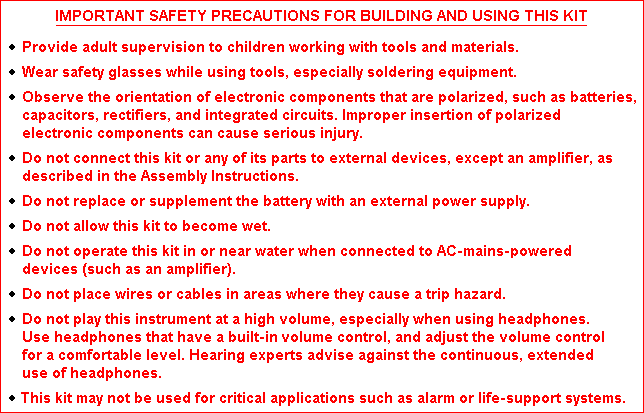
Minimum Theremin Kit 101 Assembly Instructions
(Back to "Technical
Information")

Beginners are encouraged to learn about proper soldering
techniques
before assembling this kit. Internet instructional videos on the topic
are available:
Curious
Inventor
Basic Soldering Lesson 1
-
"Solder & Flux" (PACE,
Incorporated; 8 additional lessons available)
Click
here for images of a properly soldered kit.
Click
here for the Minimum
Theremin Troubleshooting Guide. The
troubleshooting guide contains
valuable advice that will be helpful to you in your construction. It
is highly recommended that you read this guide, before you
begin
soldering.
You will need:
1. Minimum Theremin Kit
2. Tools (available from an electronics distributor such as Mouser
Electronics,
http//:www.mouser.com/):
3. Antenna and suitable enclosure (not supplied in kit)
Assembly Instructions:
|
|
|
Mild Oxidation of the
solder pads on the PCB may have occurred during
storage or transit. These oxides will impede solderability. To remove
this oxide, gently rub the pads with an unused pencil eraser. Remove
any eraser residue with a clean paper towel.
This is an image of the PCB
with the components inserted. Use this as a reference for the following
steps.
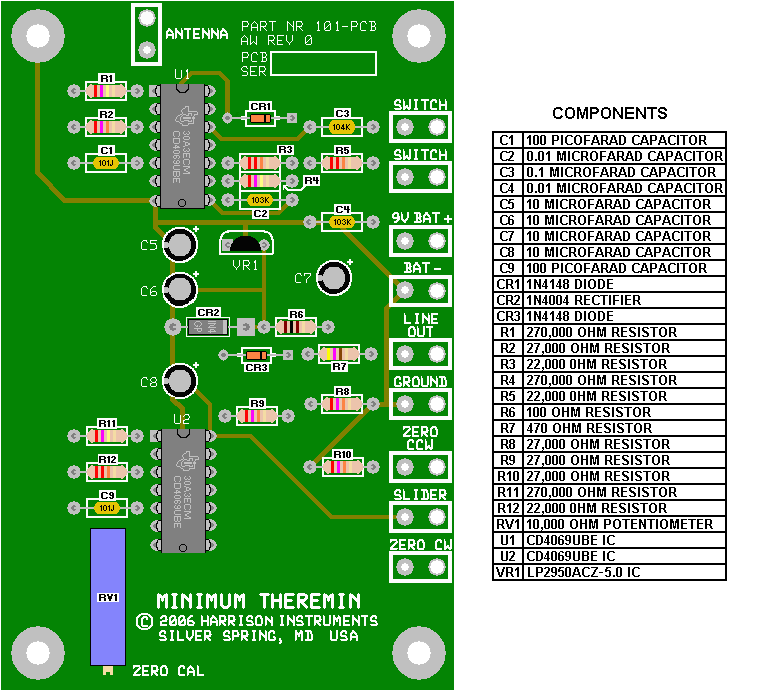
Attach a pair of Standoffs
to each corner of the PCB as illustrated. The Male-Female
Standoffs are inserted into the PCB's component side, which
is the side with the white printing. The Female Standoffs
extend from the PCB's bottom side. The standoffs elevate the board from
the work surface to allow the easy insertion of components, and prevent
the components from being crushed. The Male-Female Standoffs may be
replaced with four of the Machine Screws provided,
once the PCB is complete.
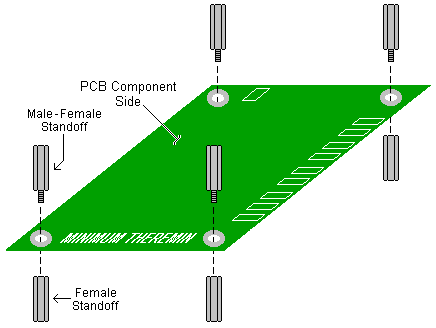
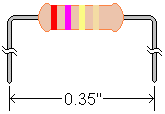


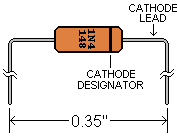

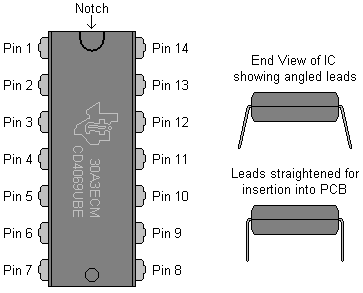
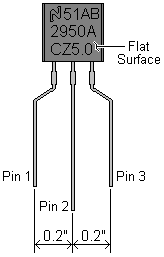
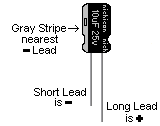
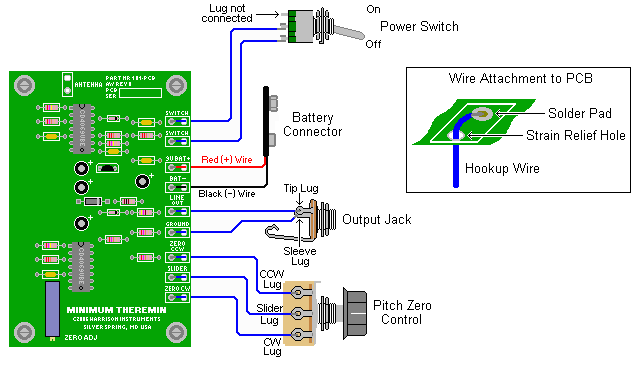
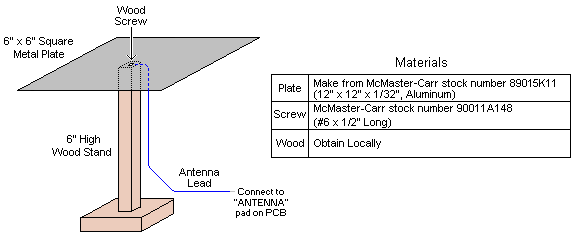
| Item | Quantity Required |
Manufacturer | Part Number | Distributor | Distributor Stock Number |
| 6-32 Hex Nut* | 2 | (Generic) | (Generic) | McMaster-Carr | 90257A007 |
| Aluminum
Sheet* |
1 | (Generic) | (Generic) | McMaster-Carr | 89015K166 |
| 6-32
Threaded Rod* |
1 | (Generic) | (Generic) | McMaster-Carr | 95412A373 |
| Banana Plug* | 1 | Bel Fuse, Inc. | 108-0753-001 | Digi-Key
Electronics |
J149-ND |
| Banana Jack* | 1 | Bel Fuse, Inc. | 108-0903-001 | Digi-Key
Electronics |
J152-ND |
| Enclosure | 1 | Polycase | DC47PMBYR | Polycase | DC47PMBYR |
| Battery Holder | 1 | Keystone
Electronics Corporation |
79 | Digi-Key Electronics | 36-79-ND |
| 2-56
X 3/16" Screw |
2 | (Generic) | (Generic) | McMaster-Carr | 91792A076 |
| 2-56 Hex Nut | 2 | (Generic) | (Generic) | McMaster-Carr | 91841A003 |
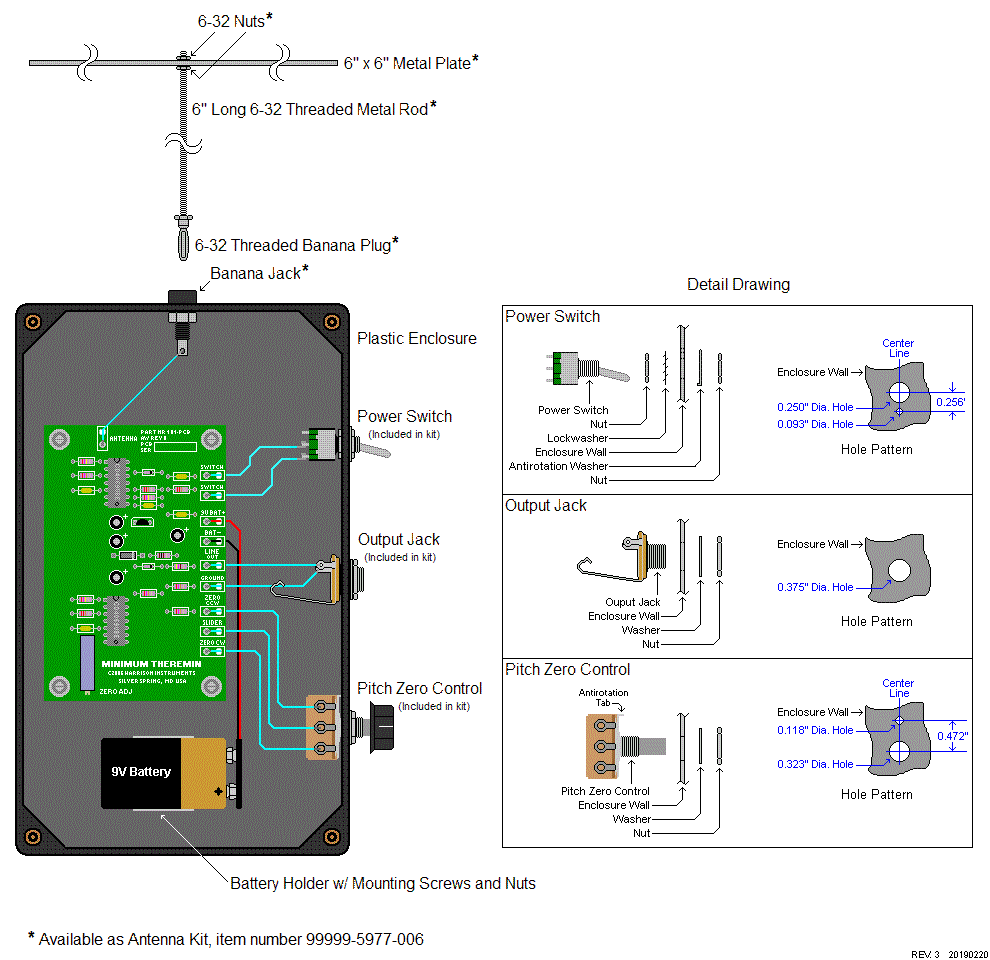
(top)